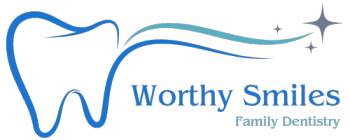Tooth Infection Dentist in Worth, IL
If you have a tooth infection, you need to see a dentist to assess whether or not you need a root canal and to get prescription antibiotics to make sure that the infection goes away and doesn’t cause any more pain or damage to your teeth.
Is Tooth Infection and Tooth Abscess The Same Things?
A Tooth Infection Can Become a Tooth Abscess. A tooth abscess and a tooth infection sound alike, but they differ. The causes of both problems, however, are similar. Tooth decay or trauma to the tooth can create a dead nerve.
What is a tooth Infection?
Cavities, dental abscesses, or tooth damage can cause tooth infections. Symptoms of a Tooth Infection Common symptoms of an infected tooth include Throbbing severe pain in the tooth Throbbing, severe pain in the jaw, Tooth sensitivity, Swelling in the mouth near the affected tooth, Bad breath, and taste in the mouth.
What is Tooth Abscess?
An abscessed tooth is a pocket of pus that can form in different parts of a tooth due to a bacterial infection.

Treatment for Tooth Infection & Abscess
The best treatment for tooth infection or tooth abscess is to go to the dentist and do what your dentist recommends. If the appointment is delayed for any reason and you are suffering from pain at home, here is a home remedy.
- Take over-the-counter pain relievers. Most people experience dramatic and even total pain relief from toothache and dental abscesses using over-the-counter NSAIDs.
- Apply anesthetics. Many people instinctively reach for brand-name or natural drugs.
- Target the bacteria.
- Rinse with salt water.
- Use a cold compress
When a doctor diagnoses you with a tooth abscess, he’s referring to that small blob of pus caused by a bacterial infection. The part of the tooth this blob will be found determines which kind of abscess it is. If, for example, it is located at the tip of the root, it most likely is the periapical abscess, whereas if it is in the gums, then it is a periodontal abscess.
The routine procedure of dentists for abscesses would be draining and getting rid of the infection. Since leaving the spot can have fatal consequences, dentists might even go for a root canal treatment in some severe cases.
How Do I Know If I Have Tooth Infection & Abscess
Plenty of general and specific signs and symptoms can help you identify or at least be relatively conscious about a tooth abscess. These may include:
- Persistent fever
- Swelling in and around your facial area
- The dirty smell from your mouth without any particular reason
- Heightened sensitivity to high or low temperatures
- Constant and unbearable toothache
- Experiencing pain while chewing or biting
Once you start experiencing this, you must go to your dentist and inform him immediately. The dentist may recommend a CT scan, MRI, or radiograph for a professional evaluation. If he doubts that you may have periapical or pericoronitis, he might also recommend you take a Cone-beam CT.
Should I take it seriously?
Yes! Do not take this lightly since it cannot be removed without proper treatment. Even if the abscess has ruptured, you still not to go to your dentist and follow it up with redeeming processes.
If the abscess is left to travel wherever it wills, it can move to other areas around your head and neck. If left untreated, it may evolve into sepsis—- a life-threatening infection that can spread throughout your entire body! If it gains a pass into the sinus, it can also infect the sinus cavity.
How is it Treated?
Although you will be entirely in the dentist’s hands after the diagnosis, it is better if you are already aware of what to expect. He might begin by making a small cut in the abscess, letting it drain, and washing it with salt water. Then —- and here comes the painful but crucial part —- your dentist will drill down into your tooth, do a root canal, and drains the abscess. After this painful procedure, if the dentist sees that the tooth can’t be saved since the spot has grown too much, your dentist might pull your tooth out. (Ouch)
How Can I Prevent It?
As the cliché saying goes: prevention is better than cure. Engaging in activities that maximize your ability to defend against these abscesses and minimize the chance of bacteria invading your personal space is better. The following exercises may be helpful:
- Drink water that contains fluoride.
- Brush your teeth at least twice a day with fluoride toothpaste.
- Use dental floss daily.
- Replace your toothbrush every 3 to 4 months
- Eat healthy food, limit sugary items
- Visit your dentist regularly for checkups
Address
11130 S Harlem Ave, Worth, IL 60482
Phone
+ (708) 448-6760
worthysmiles@gmail.com

